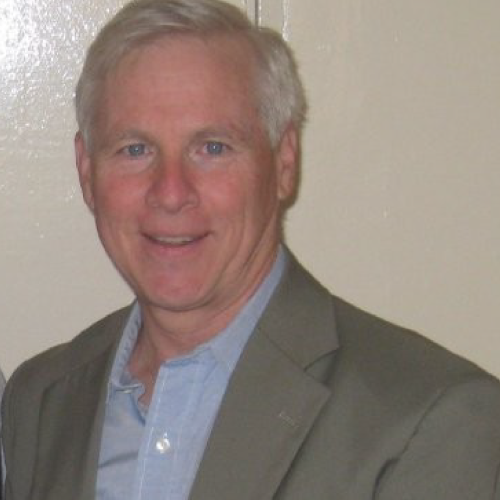Starting with any relevant education, walk me through the twists and turns of your career to date? How did one opportunity lead to the next + what was the key takeaway/ experience in each role + how did this lead you to where you are now)
I was always interested in science and nature and was very influenced by family that worked in the chemical and pharmaceutical industry. After my graduation I enjoyed a period as a scientific researcher in a microbiology lab helping the institute to develop antibodies for a Enteropathogenic E.coli as a joint effort from several institutes across the globe to create a vaccine to help prevent diarrheal illness. Fast forward a couple of years and I started to see all my friends getting more successful and starting their life, then I decided that I needed to shift my career, so I started working in a chemical company that is specialized in microbiological control using peroxide-based products.
...I decided that I needed to shift my career, so I started working in a chemical company that is specialized in microbiological control using peroxide-based products.
So, when I started in the chemical company I was as a technical support for the commercial team mainly in food safety area, understanding with clients their applications demand, dosage, different industrial processes, etc. For that job I ended up traveling a lot, meeting all kinds of people and profile and I loved that sales adrenaline, so I decided that I wanted to work with selling products and solutions, I was passionate about learning my client needs and create solutions that were sustainable, practical, and effective.
Then I got promoted to General Product Manager and was coordinating the sales team and the technical strategies for the company. By that time my focus was to create new applications by searching market needs and new regulatory opportunities. And it was around 10 years ago when I had the challenge to increase fruits shelf life and reduce waste by contamination that I came across this new application technology called “DryFogging”. I got excited about it but back then the hardware technology was not practical.
Couple of years later I still had that innovative application on my mind and started to foresee a lot of potential commercial applications. The majority of the food industries, fresh food and animal protein producers have contamination problems that originate from ambient contamination. Many fungi and bacteria contaminations start from a lack of an effective solution to control potential contamination on a closed environment, and that could also evolve to many other applications such as directly on the final product to increase shelf-life and reduce chemical conservatives.
What was the pivotal moment that put you on your current founder path?
The idea, the application and the product were solid, and I was developing it as a new product line for the chemical company as I was a General Product Manager. But since it was a “complete different” business model as it would require a hardware manufacturing, maintenance, and application team one the company owners didn’t support the project. Thus, I decided to make a spin-off and create TERRANOVA, a company specialized in microbiological control in critical environments.
Can you provide a quick summary of the technology/ area of innovation and its potential application?
With years of experience in all types of different industries TERRANOVA is the evolution of microbiological control in critical environments. One of our fortresses is the technical knowledge of the team with a multidisciplinary composition that focuses on solving our client’s needs. We have official studies for all the different uses and applications of our technology, we also have partnerships with universities to foment new applications.
TERRANOVA’s technology is already helping human and veterinary pharmaceutical companies, bread industries, fresh fruits and vegetables, healthcare, animal protein industries and sick buildings. The technology consists of generating very small droplets (5 to 7µm) from a peroxide based disinfectant solution, the droplets contact with all the exposed surfaces and oxidize all the viable cells, including spores. Our process has been tested in official laboratory and it can reach up to 7log reduction of bacteria and fungi.
TERRANOVA’s technology is already helping human and veterinary pharmaceutical companies, bread industries, fresh fruits and vegetables, healthcare, animal protein industries and sick buildings.
We are also working on expanding the use of the technology as shelf-life increaser for fresh fruits and vegetables and bread. In this case it would enable the reduction of the use of chemical preservatives in food.
What stage are you at?
We are scaling up. Our technology is already established in some markets, and we are now focusing on increase sales and revenue. We are also developing tailor made projects and fitting our technology to improve solutions in specific markets.
Market wise we are targeting animal protein production with smaller equipment for egg disinfection facilities especially to replace formaldehyde use. Also, for the pharmaceutical industries we just finished a pass-through with automated disinfection system, based on our technology with report sheets and logbook embedded technology. We see a very great opportunity on big companies that aim to reduce water consumption in sanitization process, like replacing traditional disinfection phase on CIP (Clean In Place) process with the dryfogging technique inside tanks, reactor and tubulation.
Discuss the biggest challenges of getting to this point? With the benefit of hindsight, what would you have done differently if anything?
Part of our job is to manufacture a hardware, the equipment that generates the dryfog and, at the beginning, our biggest issue was regarding the reliability of the equipment. The first couple of years that almost made me quit, it was so frustrating when we homologated the process at a client and then the equipment broke two weeks later. But after we had our seed round, when four investors joined the company, they had experience on getting suppliers overseas and that was the turning point, the real smart money. Now we have a very reliable technology that delivers strong results.
How have you approached funding?
We already have received $200,000 from a Seed Round with personal investors. And that round was all about being in the right place at the right time, it occurred very naturally, with mutual interest from both ends. Now we are at Series A trying to raise $1,000,000. We’ve been cash-flow positive since 2020 and have a strong organic growth.
But in my opinion the VC market for Biotech’s and Servtech’s are very incipient, and they have the wrong mindset of “scalability”, they brought that same Tech Startups type of scalability mindset, that is only scalable if you don’t have to invest more to get new clients, but that doesn’t fit most of the startups that are on the market. That makes the entry barrier hard to break and we end up not being fit to their investment strategy.
Have there been any pivot points in the company’s lifetime? What triggered these? Has the value proposition changed?
We went to market only six months before the Pandemic and our technology need to be proven and homologated on almost every time. COVID shut all the industries down and stopped us from being able to start new POCs process on clients. Thus, we had to rethink our commercial strategy and rebrand the technology to a more technical customer, a regular businessperson, that never thought they would need microbiological control on their offices.
But it ended up being very successful, our technology was very different than what the market had to offer, and people realized they could trust our results.
What has been the greatest source of help/ guidance along the way?
Being challenged by the clients and the new projects. It helps you to keep on your toes.
We also participate in startup’s mentorships and accelerators; it helped us a lot with organizing pitches and ideas to showcase. We ended up in those groups because in 2021 TERRANOVA was among the 100 open startups ranking and we were approached by different accelerators and made sense to participate in one of those programs.
Best advice you’d pass on to other founders?
When you have a new technology or a new process that challenge the status quo you must put the word out there. Don’t be afraid to talk about it with anybody, sell your idea and be passionate about it, you would be surprised in how the winds can on your favour.
Don’t be afraid to talk about it with anybody, sell your idea and be passionate about it, you would be surprised in how the winds can on your favour.
And if you truly believe that what you have can make a difference, stick to it, prove it, gather results, and go out there. It took me 10 years since the first day I looked at the technology for the first time.
Build a team that believe in the product. You must have a hands-on team, on the beginning that performs at the best of their ability because they embraced the idea.
What do you think are broadly the biggest needs and opportunities in the Animal Health and Petcare markets?
I’ll break down in two areas:
Veterinary Pharmaceutical Companies need to increase productivity and our technology helps reducing sanitization time and reduce the risk of product contamination with zero residues and less water consumption.
Production Animal Companies need to reduce spread of diseases on the field and need more sustainable solutions since antibiotics are being less used. So, they must increase biosafety measures with more efficient microbiological control.
What’s going to have the single biggest impact on change in your area of the market?
Production capacity, the pressure to attend the demand for more food and healthier. Also increasing the sustainability with reducing water and chemical consumption, use of more user-friendly nontoxic chemicals, organic approved solutions.
What do the next two years have in store for you?
Lots of work! Helping companies to reduce food waste, improve their productivity, reduce water consumption and making environments safer. But mainly expanding the commercial team and improving software and connectivity on the equipment.





































